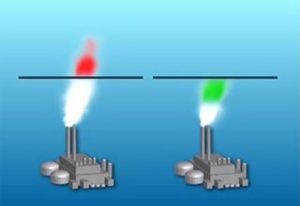A paradox has occurred where the Swedish forest industry can gain from the EU ETS, European Union Emissions Trading System, by not becoming fossil-free. The free emission allowances have become an important income for the forest industry. And the incentive to reduce the emissions has become weaker, according to a recent report by the Swedish Environmental Protection Agency and the Swedish Energy Agency.
The Emissions Trading System
The idea of the EU ETS is to create incentives for the industry (all industries) to reduce their emissions. In the meantime, the regulation must not be so hard that the industries consider moving their production outside of the EU.
Each year every industry becomes a quota of emission allowances from the EU that correspond with the number of tons of carbon dioxide that the industry in question lets out. The quota, the number of emission allowances that the EU issues, is decreasing over the years. Something that in the end shall make the industries free from fossil greenhouse gas emissions.
The Swedish forest industry is way ahead
According to the Swedish Environmental Protection Agency, the Swedish forest industry has managed to reduce its emissions by 70 percent between 1973 and 1988 according to the Swedish Environmental Protection Agency, “Naturvårdsverket”. Today, there is a smaller share of fossil fuels that most likely could have been phased out a long time ago.
The fear of industries leaving the EU has made it possible for the forest industry to collect emission allowances through the years. The average annual allocation of allowances to the Swedish forest industry (the pulp- and paper industry) is 5,7 times their own emissions in the EU ETS.
Illustration: Europa.eu
In 2021, 3,2 million emission allowances were issued to the Swedish pulp- and paper industry. The total value of those allowances was 2,2 billion SEK (Swedish Krona, approx. 220 million USD). During the same time, the total emission from this industry was 670 000 tons of fossil carbon dioxide, which must be covered by the allowances. The rest of the emission allowances are free for the owners to use as they wish.
The surplus in 2021 was a little more than 2,5 million emission allowances (3.200.000 – 670.000) at a value of almost 1,4 billion SEK (approx. 140 million USD). According to the Environmental Protection Agency, saving the remaining allowances is ok. When looking at the statistics back in time, you see that the situation has been the same for many years which means that the pulp- and paper industry theoretically can have tens of millions of emission allowances in “stock” worth billions of SEK.
Zero-emission means no emission allowances in the EU ETS
An industry that has no emissions is not allowed to participate in emission trading. One might think that the Swedish pulp- and paper industry, therefore, has little incentive to reduce its emissions, if any. There are billions at stake in the free allocation of emission allowances.
Here is the paradox in a system that does not seem to achieve what it was supposed to.
The forest industry also has free emission of NOx
In the above-mentioned report, it also appears that the pulp- and paper industry has yet another loophole for its emissions. In this case, it’s about NOx, Nitrogen oxides.
Many years back, there is a NOx fee in Sweden that should reduce the emissions. This fee is charged to all the major emission sources except the pulp- and paper industry. The reason is most likely that when the system was introduced in 1992 focus was on energy streamlining. So, only solid fuel combustion plants were included in the system. Since 2004, the Environmental Protection Agency has proposed that the pulp- and paper industry also shall be included in the system. So far without success.
The reason is that up to 12 percent of Sweden’s NOx emission comes from the pulp- and paper industry. Within this industry segment, 54 percent of the NOx emissions are from the pulp- and paper industry. It seems that those with the largest emissions are the only ones that don’t have to pay the fee.
Photo. Daniel Moqvist
This article is based on an article at iSkogen.se signed Fredrik Reuter.













